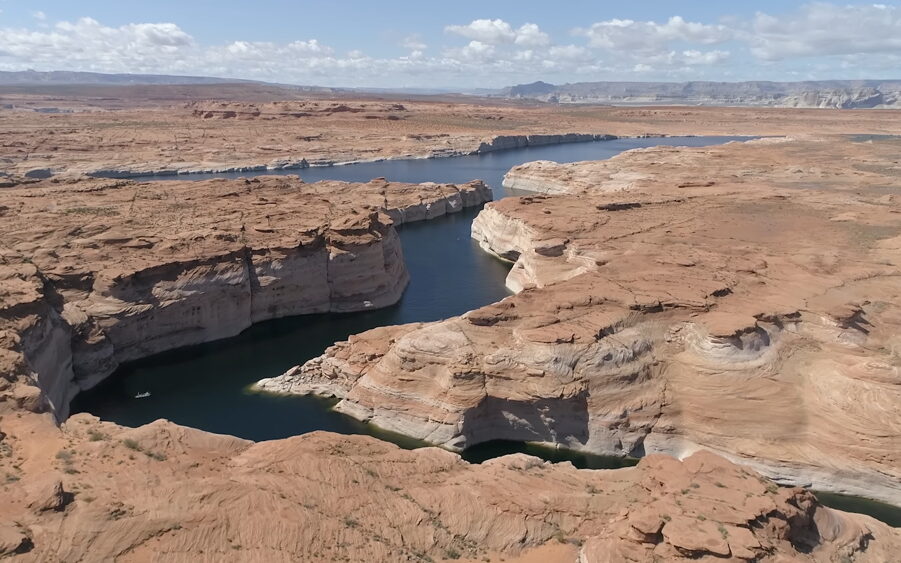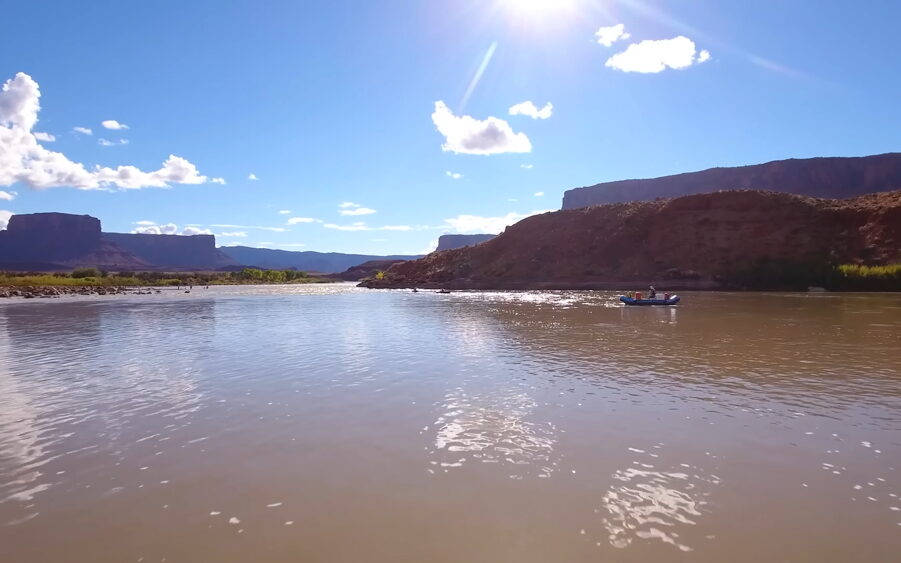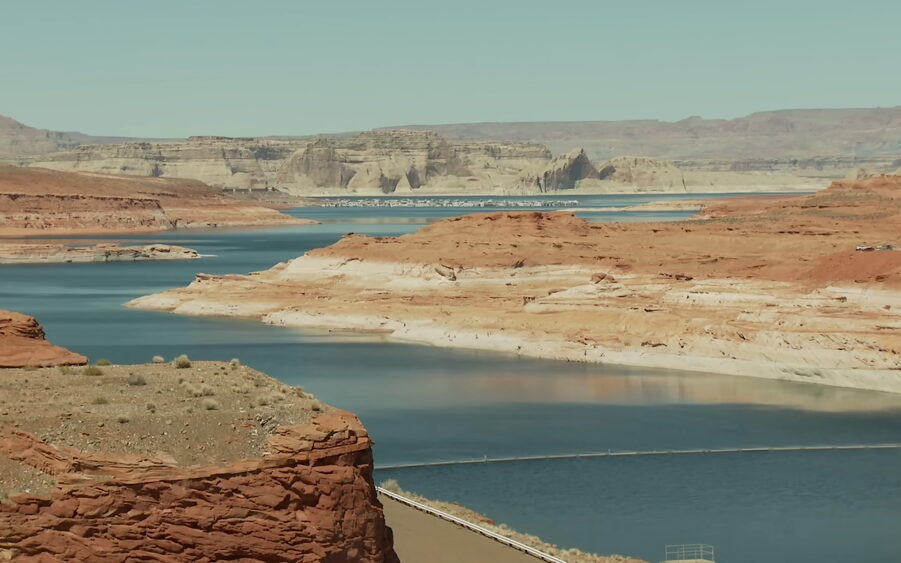Lake Mead is a vast reservoir that lies below Hoover Dam on the border of Nevada and Arizona. It has provided water to millions of people in California, Nevada, and Arizona for years.
But now Lake Mead has reached its lowest level since 1937 due to insufficient rain levels during this past year which has left America’s largest reservoir half full for the first time!
The shrinking lake means there isn’t enough water for Vegas anymore because most casinos get their water from Las Vegas Valley. The drought has also caused a water crisis in California, which has led to restrictions on lawn watering and the shutting down of faucets.
Cause of Lake Mead Drying up
Lake Mead, America’s largest reservoir, is drying up due to extreme temperatures and humans drawing too much water from it. Less snow in winter means that there is less water to replenish the reservoir when it melts in the spring. As a result, Lake Mead’s water levels have been dropping for years, and the trend is expected to continue.
The shrinking of Lake Mead also has severe implications for the environment and the economy. This is not only a problem for those who rely on the reservoir for their water supply. The loss of water in the lake can lead to dust storms, wildfires, and other problems in the surrounding area. And as one of the primary sources of hydroelectric power in the southwestern United States, a decrease in lake levels could lead to higher electricity prices and disruptions in power supplies.
The human causes of Lake Mead drying up are primarily due to our demand for water exceeding the sustainable supply. To meet our needs, we have been over-pumping groundwater and using more surface water than can be replenished. Climate change also plays a role, as warmer temperatures lead to more evaporation from lakes and aquifers.
We can take steps to reduce our impact on Lake Mead and other water resources. We can use water more efficiently and develop new water sources through desalination and other methods. We also need to manage our existing water resources better so that we are not over-pumping groundwater or using more surface water than can be replenished.
By taking these steps, we can help to ensure that Lake Mead and other vital water resources are available for future generations.

What will happen if lake mead dries up?
If Lake Mead, the largest reservoir in America, dries up, it could have several disastrous consequences. Firstly, losing such a large body of water would be an ecological disaster. The animals and plants in and around the lake would be severely impacted. Secondly, there could be water shortages in places like the Grand Canyon.
The Colorado River provides water to many different areas, and if the reservoirs it flows into are depleted, it could cause problems for many people. Finally, the issue of supply and demand is depleting the reservoirs. With more and more people using water from these sources, they are not being replenished at the same rate. This means that eventually, they will run dry.

The solution to the Lake Mead water shortage
One solution to the problem of Lake Mead drying up is importing water from other sources. This could involve building pipelines or canals to bring water from areas where there is a surplus to Lake Mead. Another option is to increase water storage capacity in the reservoir. This could be done by constructing new dams or enlarging existing ones. Finally, reducing water usage is another way to help solve the problem. This can be done by using more efficient irrigation practices, installing low-flow plumbing fixtures, and promoting conservation measures.
We are using way more water than the river now produces. Warm temperatures, earlier runoff dates, and dry soils have left us with far less water flowing into the reservoirs. This is depleting them fast.
What does this mean for the future?
If we don’t find a way to reduce our water usage or increase the amount of water flowing into the reservoirs, they will eventually run dry. This would be catastrophic for the millions of people who rely on them for their drinking water. It would also have a devastating impact on agriculture and industry in the region.
So what can be done?
There are several possible solutions to this problem, but it will require cooperation from everyone who uses water from the Colorado River basin. We must find ways to use less water or increase the amount of water flowing into the reservoirs. This will require changes in how we use and conserve water at both an individual and collective level.

Will Lake Mead fill up again?
Increased temperatures and severe drought are causing Lake Mead to dry up. Climate change has resulted in lower than average precipitation in the region, while the increased demand for water due to population growth has put a strain on the reservoir. Additionally, mineralization occurs within the reservoir, making the water increasingly salty. This is due to the Hoover Dam, which prevents sediments from flowing into the lake, causing them to accumulate over time.
How would this impact the states?
The biggest reservoir in the country, Lake Mead, is losing water. This is due to the increased demand for water in the southwestern United States and the decrease in precipitation in the area. This has caused a lot of turmoil among the states that rely on Lake Mead for their water supply.
The main issue is that there are not enough water rights to cover all users relying on Lake Mead. This means that some users will have to cut back on their usage, even if they have used the same amount of water for years. This has caused a lot of tension among the states, as they are trying to figure out how to distribute the cuts among all users fairly.
So far, a clear solution has not been proposed to satisfy all states. It is challenging to devise a plan that would be fair to all involved when some states have been using more water than others for many years. Climate change makes the situation even more complicated, increasing the water demand in an already dry region.
It remains to be seen how this situation will play out, but it will significantly impact all states that rely on Lake Mead for their water supply.
What does the “Dead pool” mean?
The “Dead pool” is the section of Lake Mead that is no longer deep enough to be used for boating or other activities. It is the lowest point of Lake Mead and will be reached when the water level drops to 1,075 feet above sea level.
The name “dead pool” may sound ominous, but it refers to the fact that the water in this section is still, with no current. It also refers to the fact that no more water will flow into Lake Mead once it drops below 1,075 feet. The water in the dead pool area will evaporate and eventually disappear.

